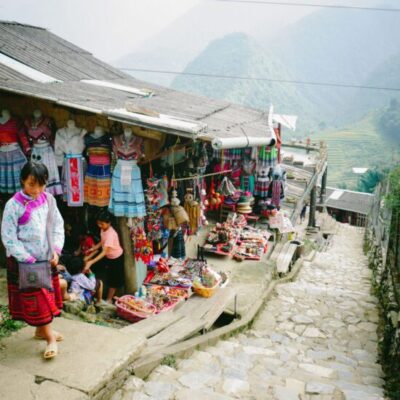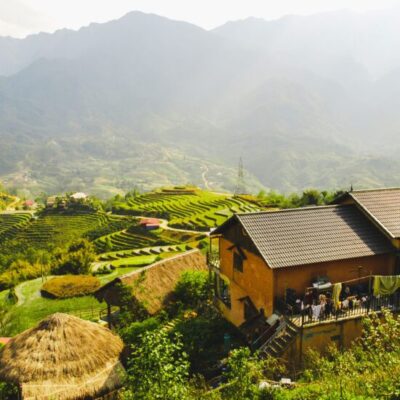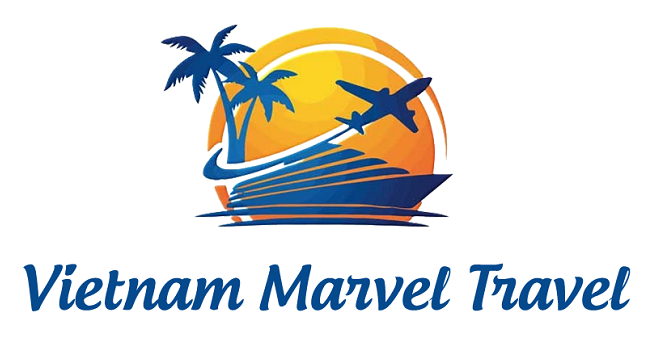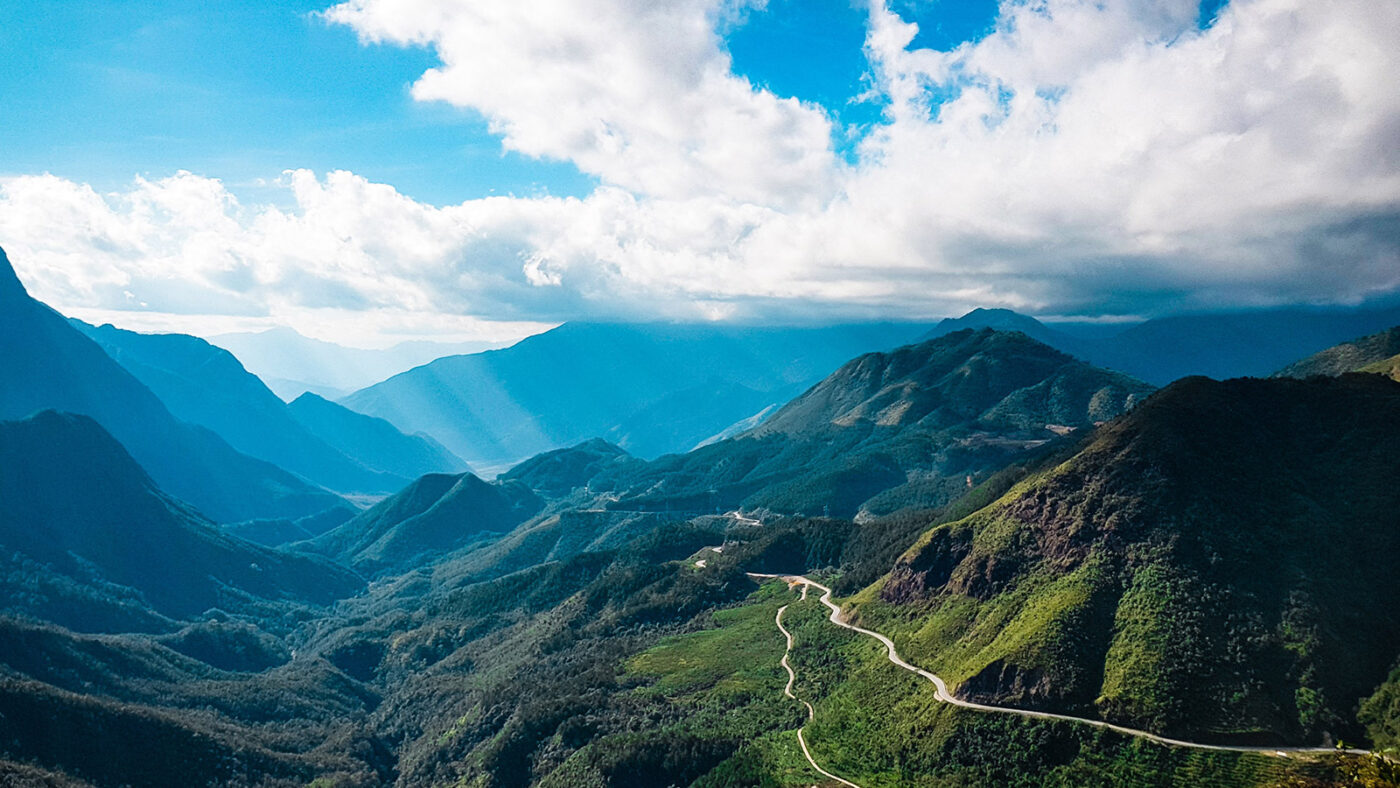The Ultimate Vietnam Travel Guide: Your Complete Journey Through Timeless Beauty
Vietnam stands as a captivating destination where ancient traditions harmonize with rapid modernization, offering travelers an intoxicating blend of vibrant street life, ethereal landscapes, complex history, and world-renowned cuisine. This comprehensive Vietnam travel guide will take you through everything you need to know before embarking on your Vietnamese adventure.

Understanding Vietnam: Context and Culture
A Brief Historical Overview
Vietnam’s rich story spans thousands of years, shaped by indigenous cultures, Chinese domination, French colonization, and the conflicts of the 20th century. The Vietnamese proudly trace their origins to the legendary Hung Kings who ruled the ancient kingdom of Van Lang over 4,000 years ago.
After nearly a millennium of Chinese rule, Vietnam gained independence in 939 CE, followed by the rise and fall of various dynasties including the Ly, Tran, and Nguyen. The French colonization period (1887-1954) left an indelible mark on Vietnam’s architecture, cuisine, and infrastructure before the devastating Vietnam War.
Since economic reforms known as change were implemented in 1986, Vietnam has experienced rapid development while maintaining its unique cultural identity, becoming one of Southeast Asia’s fastest-growing economies.

Cultural Nuances to Know
Vietnamese culture embodies harmony, balancing Confucian principles with Buddhist compassion and indigenous beliefs. Family bonds are sacred, with multiple generations often sharing homes and ancestral worship remaining an important practice.
The concept of “saving face” is fundamental to social interactions. This means avoiding public criticism or confrontation and showing respect, particularly to elders. A gentle demeanor and patience will help you navigate social situations gracefully.
Vietnamese holidays and festivals offer windows into the country’s soul. Tết (Lunar New Year) transforms cities and villages into colorful celebrations of renewal, while the Mid-Autumn Festival delights with lanterns and mooncakes.

Language Essentials
While many Vietnamese in tourist areas speak basic English, learning a few Vietnamese phrases demonstrates respect and often leads to warmer interactions:
- Xin chào (sin chow) – Hello
- Cảm ơn (kam un) – Thank you
- Xin lỗi (sin loy) – Excuse me/Sorry
- Bao nhiêu? (bow nyew) – How much?
- Làm ơn (lam un) – Please
Vietnamese is a tonal language with six distinct tones that can change a word’s meaning completely, but locals appreciate any effort to speak their language.

Planning Your Vietnam Trip: Practical Considerations
Best Time to Visit Vietnam
Vietnam’s elongated geography creates distinct climate zones, meaning there’s never a perfect time to visit the entire country. However, understanding regional weather patterns can help you plan an optimal itinerary:
Northern Vietnam (Hanoi, Sapa, Ha Long Bay)
- Best: October to April (dry season with cooler temperatures)
- Avoid: July-August (extremely hot and rainy)
Central Vietnam (Hue, Da Nang, Hoi An)
- Best: January to August (less rainfall)
- Avoid: October-November (potential flooding)
Southern Vietnam (Ho Chi Minh City, Mekong Delta)
- Best: December to April (dry season)
- Avoid: May to November (monsoon season)
For those with flexibility, shoulder seasons (April-May and September-October) often provide a good balance of reasonable weather and fewer crowds. Consider planning your route to follow favorable weather patterns from north to south or vice versa.
For more detailed insights on seasonal travel planning across Vietnam’s diverse regions, check out the comprehensive guides at Indochina Today Travel, which offers expert advice for navigating Vietnam’s climate variations.
Visa Requirements
Most travelers require a visa to enter Vietnam. Options include:
- E-visa: Available for citizens of 80+ countries for stays up to 30 days. Apply online through the official government website at least 7 days before arrival. Costs approximately $25 USD.
- Visa on Arrival: Requires pre-approval letter from a Vietnamese travel agency before flying to Vietnam. Upon arrival, you’ll pay a stamping fee ($25-50 USD) and provide passport photos.
- Embassy/Consulate Visa: Traditional application through Vietnamese diplomatic missions. More expensive but offering longer stay options.
Always check the latest visa requirements before traveling, as regulations change frequently. Vietnamese immigration strictly enforces overstay penalties.
Transportation in Vietnam
International Gateways: The main international airports are in Hanoi (HAN) and Ho Chi Minh City (SGN), with growing international connections to Da Nang (DAD) as well.
Domestic Transportation:
- Flights: Vietnam Airlines, VietJet Air, and Bamboo Airways offer comprehensive domestic networks. Flights between major cities typically cost $30-100 USD and save considerable time.
- Trains: The Reunification Express runs the length of the country from Hanoi to Ho Chi Minh City. Trains offer comfortable sleeper cars and spectacular scenery, particularly along the coast between Hue and Da Nang.
- Buses: Extensive networks connect cities and rural areas, ranging from basic local buses to luxurious sleeper coaches with reclining seats. Companies like Futa Bus (Phuong Trang) offer reliable services with online booking options.
- Motorbikes: For the adventurous, Vietnam’s iconic experience is traveling by motorbike. You can rent scooters for daily exploration or even purchase a bike for a north-to-south journey.
- Grab/Taxi Apps: In cities, ride-hailing apps like Grab provide convenient, affordable transportation without language barriers or negotiation.
Budgeting for Vietnam
Vietnam remains one of Southeast Asia’s more affordable destinations, though prices have increased with growing tourism. General daily budgets might look like:
Budget Traveler: 700,000-1,200,000 VND ($30-50 USD) per day
- Hostel dorms or basic guesthouses
- Street food and local restaurants
- Public transportation
- Free or low-cost attractions
Mid-range Traveler: 1,200,000-3,000,000 VND ($50-125 USD) per day
- Private rooms in guesthouses or mid-range hotels
- Mix of local and Western restaurants
- Occasional guided tours
- Comfortable transportation options
Luxury Traveler: 3,000,000+ VND ($125+ USD) per day
- Boutique or luxury hotels
- Fine dining experiences
- Private guides and premium tours
- Comfortable transportation
Money-saving tips:
- Eat where locals eat (look for plastic stools and busy establishments)
- Book transportation in advance
- Negotiate prices for souvenirs (but always respectfully)
- Use local SIM cards instead of roaming services
- Take advantage of happy hour deals
Health and Safety Tips
Vaccinations: Consult your healthcare provider about recommended vaccinations, which may include hepatitis A and B, typhoid, and Japanese encephalitis.
Health Precautions:
- Drink bottled or purified water
- Use mosquito repellent, particularly in rural areas
- Consider travel insurance that covers medical evacuation
- Bring basic medications for common travel ailments
Safety: Vietnam is generally safe for travelers, with violent crime rare. However:
- Be vigilant against petty theft in crowded areas
- Use hotel safes for valuables
- Be cautious when crossing streets (walk steadily and predictably)
- Research legitimate tour operators and transportation companies
- When riding motorbikes, always wear helmets and drive defensively
Communication: Purchase a local SIM card upon arrival for affordable data and calling capabilities. Major providers include Viettel, MobiFone, and Vinaphone, with tourist packages offering generous data for around 200,000 VND ($8-10 USD).
Regional Highlights: Northern Vietnam
Hanoi: The Soul of Vietnam
Vietnam’s capital for over a thousand years, Hanoi blends French colonial elegance with ancient Vietnamese traditions. The city’s heart beats in the labyrinthine streets of the Old Quarter.
Must-Experience:
- Wander the Old Quarter: Each street historically specialized in specific trades and remains a bustling commercial area today.
- Temple of Literature: Vietnam’s first national university, established in 1070, honoring scholars and sages.
- Hoa Lo Prison: Nicknamed the “Hanoi Hilton” by American POWs during the Vietnam War.
- Museums: The Vietnam Museum of Ethnology and Women’s Museum offer cultural insights.
- Hoan Kiem Lake: The spiritual center of Hanoi with the iconic red Huc Bridge leading to the Temple of the Jade Mountain.
- Coffee Culture: Try the famous egg coffee (cà phê trứng) and explore Hanoi’s vibrant café scene.
Hidden Gems:
- Train Street: Experience trains passing through narrow residential streets.
- Ngoc Son Pagoda: A hidden Buddhist temple offering serenity amid city chaos.
- Long Bien Bridge: This historic structure designed by Gustave Eiffel’s company offers spectacular sunset views.
- Weekend Night Market: Extending from Hang Dao Street, showcasing local crafts and regional specialties.

Sapa: Highlands and Hill Tribes
Nestled in the Hoang Lien Son mountain range, Sapa offers Vietnam’s most dramatic landscapes and authentic encounters with hill tribe cultures.
Must-Experience:
- Trek to Remote Villages: Multi-day hikes to communities like Ta Van, Cat Cat, and Lao Chai.
- Climb Fansipan: Vietnam’s highest peak (3,143m) via trekking or cable car.
- Explore Sapa Town: Featuring a stone church, central lake, and vibrant market.
- Experience the Changing Seasons: Sapa transforms dramatically throughout the year.
- Homestay with Local Families: Share meals and daily life while learning about traditional practices.
Hidden Gems:
- Muong Hoa Valley: Features ancient rock carvings dating back 3,000 years.
- Silver Waterfall (Thac Bac): An impressive 200m cascade.
- Bac Ha Sunday Market: A colorful weekly gathering of Flower Hmong people.
- Ham Rong Mountain: Offers orchid gardens and sweeping valley views.

Ha Long Bay and Beyond: Karst Wonderlands
The limestone karsts of Ha Long Bay rising from emerald waters create Vietnam’s most iconic landscape.
Must-Experience:
- Overnight Cruise: Spend at least one night aboard a traditional junk boat. For truly memorable experiences, consider the luxury cruises offered by Halong Bay Lux Cruises, which provide exceptional dining, private balconies, and curated excursions to less-visited areas of the bay.
- Explore Caves and Grottos: Including Surprise Cave, Thien Cung, and Dau Go.
- Kayak through Karst Labyrinths: Paddle through towering limestone formations.
- Visit Floating Villages: Communities like Cua Van and Vung Vieng maintain traditional fishing lifestyles.
- Consider Alternative Bays: Bai Tu Long Bay and Lan Ha Bay offer similar landscapes with fewer tourists.
Hidden Gems:
- Cat Ba Island: Offers hiking in Cat Ba National Park and secluded beaches.
- Trang An Landscape Complex: Often called “Ha Long Bay on land,” featuring boat tours through limestone caves.
- Tam Coc-Bich Dong: Local women row boats with their feet through rice fields and karst formations.
- Pu Luong Nature Reserve: Combines limestone landscapes with terraced rice fields and ethnic minority villages.
Regional Highlights: Central Vietnam
The Imperial City of Hue
Once the imperial capital of the Nguyen Dynasty (1802-1945), Hue embodies Vietnam’s royal heritage.
Must-Experience:
- The Imperial Citadel: A UNESCO World Heritage Site encompassing the Purple Forbidden City.
- Royal Tombs: Elaborate mausoleums of Tu Duc, Minh Mang, and Khai Dinh.
- Thien Mu Pagoda: Vietnam’s unofficial symbol overlooking the Perfume River.
- Sample Imperial Cuisine: Try specialties like bánh khoái, bún bò Huế, and elaborate vegetarian dishes.
- Cruise the Perfume River: Traditional dragon boats provide leisurely perspectives of riverine life.
Hidden Gems:
- Abandoned Water Park (Hồ Thuỷ Tiên): An eerie attraction with a massive dragon aquarium centerpiece.
- Thanh Toan Bridge: A covered wooden bridge dating from the 18th century.
- Bach Ma National Park: A former French hill station offering cooler temperatures and hiking trails.
- Vọng Cảnh Hill: Offering panoramic views of the Perfume River and surrounding countryside.
Hoi An: Vietnam’s Most Enchanting Town
Preserved nearly intact since its days as a major trading port, Hoi An captivates visitors with its well-maintained merchant houses and iconic Japanese Covered Bridge.
Must-Experience:
- Wander the Ancient Town: The pedestrianized historic center allows leisurely exploration of diverse architecture.
- Lantern-lit Evenings: Paper lanterns illuminate the town, with special full moon celebrations monthly.
- Tailor Made Clothing: Hoi An’s famous tailors can create custom garments within 24-48 hours.
- Cooking Classes: Learn to prepare Central Vietnamese specialties.
- An Bang Beach: A beautiful coastline just 5km from the Ancient Town.
- Bicycle through Rural Surroundings: Pedal through rice fields and farming communities.
Hidden Gems:
- Precious Heritage Museum: Photographer Réhahn’s gallery showcasing portraits and artifacts from Vietnam’s ethnic minorities.
- Thanh Ha Pottery Village: Artisans continue centuries-old ceramic traditions.
- Tra Que Vegetable Village: An organic farm area growing aromatic herbs and vegetables using traditional methods.
- Cham Islands: A marine protected area offering excellent snorkeling and diving opportunities.
Many travelers combine visits to Hue, Hoi An, and the Central Highlands in custom itineraries, which can be expertly arranged through Indochina Today Travel with insider access to local experiences not found in typical tourist routes.
Da Nang: Vietnam’s Rising Star
Once primarily a transit point, Da Nang has emerged as a destination in its own right, offering dramatic bridges, contemporary museums, and some of Vietnam’s best beaches.
Must-Experience:
- My Khe Beach: A 30km stretch of white sand offering excellent swimming and surfing opportunities.
- Marble Mountains: Five limestone and marble hills containing elaborate cave pagodas and tunnels.
- Dragon Bridge: This contemporary landmark breathes fire and water on weekend evenings.
- Ba Na Hills: Features the iconic Golden Bridge supported by giant stone hands.
- Son Tra Peninsula: Home to the massive Lady Buddha statue and rare red-shanked douc langurs.
Hidden Gems:
- Non Nuoc Stone Carving Village: Artisans transform marble into sculptures.
- Museum of Cham Sculpture: The world’s largest collection of Cham artifacts.
- Hai Van Pass: Made famous by “Top Gear,” offering spectacular coastal views.
- Nam O Fish Sauce Village: Learn about traditional production methods of Vietnam’s essential condiment.
Phong Nha-Ke Bang: Vietnam’s Underground Kingdom
This UNESCO-listed national park contains some of the world’s most spectacular cave systems, including Son Doong—the largest cave on Earth.
Must-Experience:
- Paradise Cave: This accessible wonder extends 31km underground.
- Phong Nha Cave: Explore this river cave by boat, viewing ancient Cham inscriptions.
- Dark Cave: Adventure seekers can zipline to the entrance, then kayak and mud-bathe within.
- Son Doong Expedition: Multi-day expeditions into the world’s largest cave.
- Botanical Gardens: Offering jungle trekking and wild swimming.
Hidden Gems:
- Bong Lai Valley: Offers rustic farm stays and swimming holes.
- Tu Lan Cave System: Features swimming through river caves and camping in hidden valleys.
- Abandoned Valley (Hang Va): Spectacular cave formations including tower cones emerging from turquoise pools.
- Pub with Cold Beer: A remote farmhouse serving what many consider Vietnam’s best grilled chicken.
Regional Highlights: Southern Vietnam Travel Guide
Ho Chi Minh City: Dynamic Metropolis
Vietnam’s largest city pulses with entrepreneurial energy, historic significance, and culinary excellence.
Must-Experience:
- District 1 Landmarks: Including Notre Dame Cathedral, Central Post Office, Reunification Palace, and Opera House.
- War Remnants Museum: A sobering collection documenting the Vietnam War.
- Cholon (Chinatown): Explore Chinese temples, medicine shops, and bustling markets.
- Cafe Culture: Try cà phê sữa đá (iced coffee with condensed milk).
- Street Food Safari: Follow locals to outdoor food streets for authentic dining experiences.
- Contemporary Art Galleries: Explore Vietnam’s vibrant art scene at spaces like San Art and Galerie Quynh.
Hidden Gems:
- Dieu De Pagoda: A working monastery offering tranquility amid urban chaos.
- Binh Tay Market: A wholesale market in Cholon providing authentic shopping experiences.
- Apartment Cafes: Former apartment buildings transformed into vertical malls housing trendy cafes and boutiques.
- Secret Cocktail Bars: Discover hidden speakeasies like Snuffbox and Firkin for craft cocktails.
Mekong Delta: Vietnam’s Rice Bowl
This fertile region encompasses countless waterways, floating markets, and verdant orchards, with life revolving around water.
Must-Experience:
- Floating Markets: Visit Cai Rang near Can Tho or the smaller Phong Dien for authentic market experiences.
- Sampan Adventures: Navigate narrow palm-fringed canals in traditional wooden boats.
- Fruit Orchards: Sample exotic fruits like mangosteen, rambutan, and durian.
- Cao Dai Temple: A colorful temple representing Vietnam’s indigenous Cao Dai religion.
- Tra Su Cajuput Forest: A flooded forest sanctuary providing habitat for numerous bird species.
Hidden Gems:
- Can Tho Islets: Small islands offering homestays with genuine Delta hospitality.
- Xeo Quyt Forest: A former Viet Cong base with preserved underground bunkers.
- Sa Dec Town: The setting for Marguerite Duras’ novel “The Lover,” featuring colorful flower nurseries.
- Tra Vinh Province: Home to a significant Khmer minority with magnificent Khmer-style temples.
Phu Quoc Island: Tropical Paradise
Vietnam’s largest island combines pristine beaches, lush jungle interiors, and rapidly developing tourism infrastructure.
Must-Experience:
- Bai Sao Beach: A picture-perfect stretch of white sand and crystal-clear water.
- Phu Quoc National Park: Offering hiking trails through primary rainforest.
- Night Market: Showcasing the island’s famous seafood, handicrafts, and local specialties.
- Pepper Plantations: Tour plantations to learn about Phu Quoc’s renowned black pepper.
- Fish Sauce Factories: See the traditional wooden barrel aging process for Vietnam’s most famous fish sauce.
Hidden Gems:
- Starfish Beach (Rach Vem): Features numerous red starfish in shallow waters.
- Suoi Tranh Waterfall: A series of gentle cascades through jungle settings.
- Ham Ninh Fishing Village: Built on stilts over the water, offering ultra-fresh seafood.
- Ong Lang Beach: A less developed stretch of coastline with sunset views.
Dalat: Highland Retreat
Established as a French hill station, Dalat’s cool climate and pine-forested landscapes provide welcome relief from Vietnam’s tropical heat.
Must-Experience:
- Crazy House (Hang Nga Guesthouse): A Gaudi-esque architectural fantasy.
- Linh Phuoc Pagoda: Decorated with intricate mosaics created from broken pottery.
- Flower Gardens: Visit the Flower Park or Da Lat Flower Farm for colorful displays.
- Coffee Plantations: Tour plantations to learn about Vietnam’s fine arabica coffee.
- Adventure Activities: Try canyoning, mountain biking, and hiking.
Hidden Gems:
- Elephant Falls: A powerful cascade requiring scrambling over rocks for the best views.
- Bidoup Nui Ba National Park: Contains Vietnam’s second-highest peak and rare pine trees.
- Lat Village: Experience authentic K’Ho ethnic minority culture.
- Train Station: A charming colonial building offering a short nostalgic train ride.

Vietnamese Cuisine: A Culinary Journey
Regional Flavors
Vietnamese cuisine varies dramatically from north to south:
Northern Cuisine (Hanoi and surroundings)
- Subtle flavors with minimal spice
- Chinese influence in stir-fries and noodle dishes
- Emphasis on freshwater fish and seasonal vegetables
- Signature dishes: phở bò, bún chả, chả cá
Central Cuisine (Hue, Hoi An, Da Nang)
- Spicier and more complex than northern dishes
- Imperial influence creates elaborate presentations
- Smaller portions designed for multi-course meals
- Signature dishes: bún bò Huế, bánh xèo, cao lầu
Southern Cuisine (Ho Chi Minh City, Mekong Delta)
- Sweeter flavors with more herbs and vegetables
- Influence from Cambodia and Thailand
- Abundance of tropical fruits and seafood
- Signature dishes: cơm tấm, canh chua, bánh mì
Street Food Essentials
Vietnam’s street food culture represents the nation’s culinary soul. Key dishes to try include:
- Phở: Rice noodles, aromatic broth, and meat (usually beef or chicken)
- Bánh Mì: French-influenced sandwich with meats, pâté, vegetables, and herbs
- Bún Chả: Grilled pork patties and slices served with rice noodles and dipping sauce
- Gỏi Cuốn: Fresh spring rolls wrapped in rice paper
- Cơm Tấm: “Broken rice” topped with grilled pork, fried egg, and vegetables
- Chè: Sweet soups and puddings made from beans, jellies, fruits, and coconut milk
For culinary enthusiasts, Indochina Today Travel offers specialized food tours that take you beyond the typical tourist spots to authentic local eateries and cooking classes with master chefs throughout Vietnam’s diverse regions.
Dining Etiquette
Understanding basic Vietnamese dining customs enhances your culinary experience:
- Meals are typically shared family-style
- Rice bowls are held close to the mouth while eating
- Chopsticks should never be left standing vertically in rice
- Slurping noodles is acceptable and even appreciated
- The eldest person at the table is usually served first
- Finish everything in your bowl to show appreciation
Cooking Classes
Learning to prepare Vietnamese dishes provides lasting souvenirs of your journey. Quality cooking classes typically include market tours, hands-on preparation, cultural context, and recipe booklets.
Recommended cooking schools include:
- Hanoi: Highway 4 Cooking Class, Hanoi Cooking Centre
- Hoi An: Morning Glory Cooking School, Thuan Tinh Island Cooking Class
- Ho Chi Minh City: Vietnam Cookery Center, Saigon Cooking Class

Responsible Travel in Vietnam
Cultural Sensitivity
- Dress Appropriately: Conservative dress is appreciated, particularly at religious sites
- Respect Sacred Spaces: Remove shoes when entering temples, pagodas, and many homes
- Ask Before Photographing: Particularly when photographing ethnic minorities or religious ceremonies
- Learn About Recent History: Be respectful when discussing the “American War” with locals
Environmental Considerations
- Plastic Reduction: Carry a reusable water bottle and refuse plastic bags when possible
- Wildlife Protection: Avoid attractions featuring captive animals or products made from endangered species
- Sustainable Tours: Choose operators committed to environmental protection and community benefits
When selecting Ha Long Bay cruises, consider eco-friendly options from Halong Bay Lux Cruises, which implements sustainable practices while still providing luxury experiences. Their vessels use advanced waste management systems and support local conservation initiatives.

Final Thoughts on Visiting Vietnam
Vietnam offers an incredible journey through diverse landscapes, rich cultural experiences, and unforgettable culinary adventures. By approaching your trip with respect, curiosity, and flexibility, you’ll discover a nation of extraordinary beauty and resilience that will leave lasting impressions long after you return home.
Whether you’re trekking through misty mountains with ethnic minorities, cruising among limestone karsts, wandering lantern-lit ancient streets, or savoring a steaming bowl of phở on a plastic stool, Vietnam rewards travelers who embrace its authentic spirit and timeless charm. This Vietnam travel guide aims to provide you with all the essential information you need to plan your perfect Vietnamese adventure.
For travelers seeking deeper connections with Vietnam’s culture and landscapes, consider booking with specialized tour providers like Indochina Today Travel, which offers expertly crafted itineraries that balance must-see attractions with authentic local experiences.
Free support information and best Vietnam Travel guide tour contact following at below.
- Hotline | WhatsApp: +84.978.358.422
- Phone | WhatsApp: +84.962.261.687
- Email: halongbayluxcruises@gmail.com
- vietnammarveltravel@gmail.com


The Ultimate Vietnam Travel Guide
Vietnam Travel provides perfect service